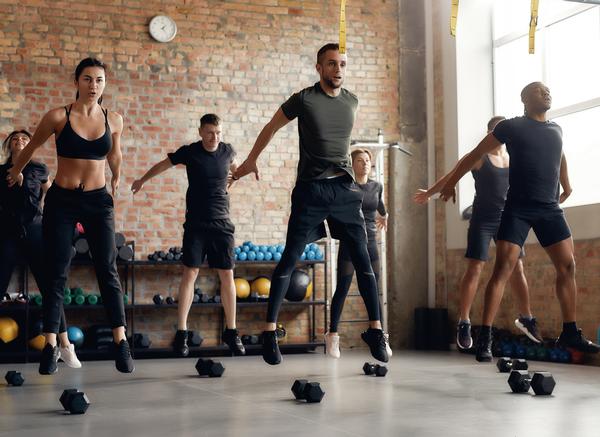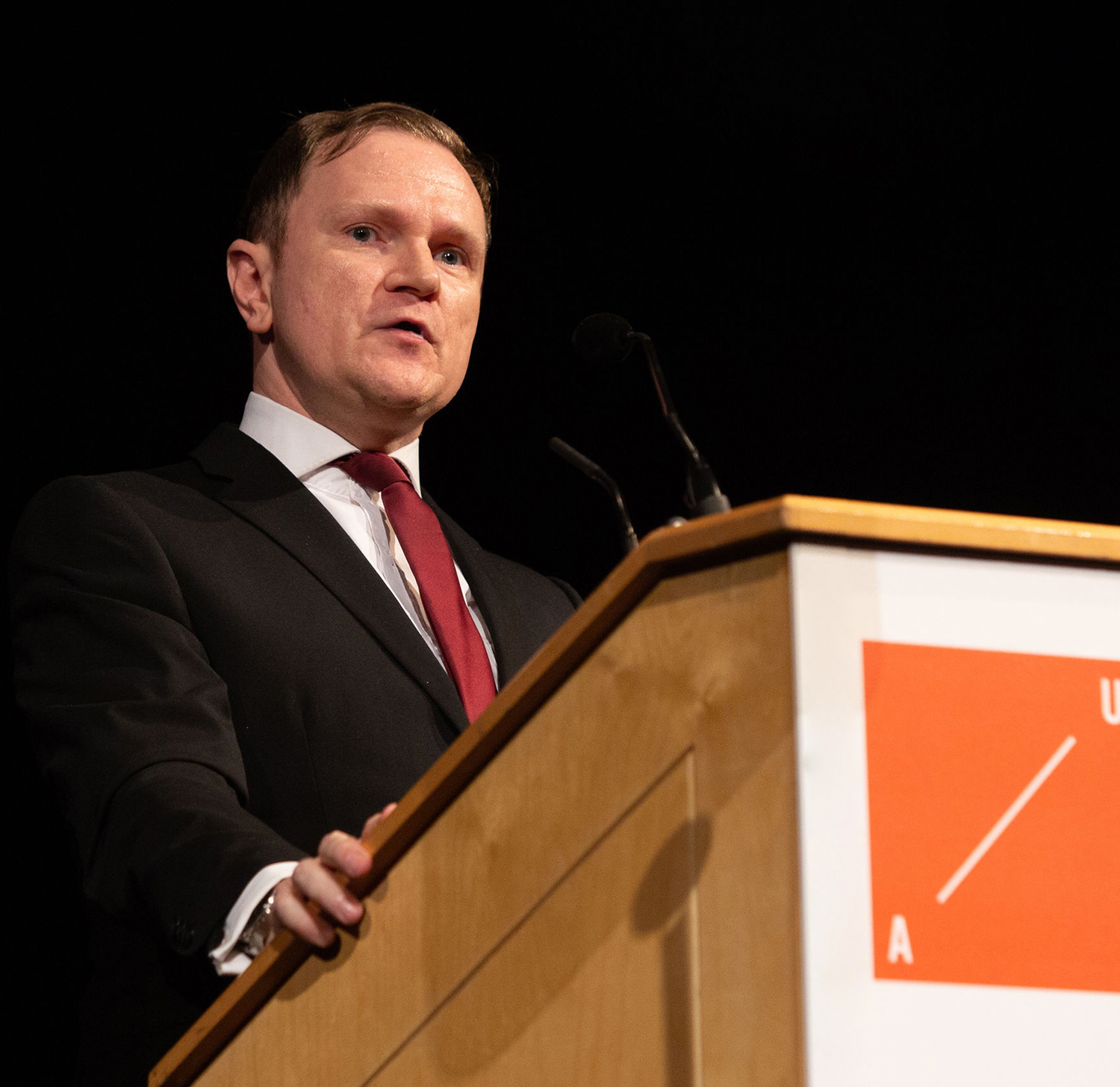



SELECTED
ISSUE
|
|
Leisure Management - High street gyms

Talking point

|
|
| High street gyms
|

Gym operators in the UK can now open on the high street,
without planning permission, thanks to changes in legislation.
What impact will this have on the industry? Kath Hudson reports
|


The relaxation in legislation means empty shops could be transformed into gyms SHUTTERSTOCK.COM/ BAZA Production
|
|
|
High streets across the country were struggling even before the COVID-19 lockdown pushed everyone further in the direction of online shopping.
As a result, the loosening of planning regulations to allow gyms on the high street is welcome news that could breathe new life into towns full of empty shops.
The changes relate to amendments to the Use Class Order, the legislation which defines the nature of businesses permitted to operate on the high street. The limited nature of the Use Class Order has made it difficult for towns to diversify their retail mix in response to changing consumer demands.
This relaxation in legislation allows commercial and retail properties to be quickly repurposed, without a planning application or local authority approval, so health and fitness operators can move in, bringing with them vital footfall.
How much of an opportunity is this for the health and fitness sector? Is the post-COVID high street a good business proposition? Will premises in more visible positions help to broaden the market and enable gym operators to build more high-profile consumer brands? Will we see new operators and new concepts emerging? HCM ask the experts.
|
Huw Edwards
ukactive

ukactive lobbied government to allow gyms to help revitalise ailing high streets
The physical activity sector has been one of the fastest-growing in the UK during recent times, supporting the health and wellbeing of local communities.
Our nation’s gyms and leisure centres form the fabric of our society, contributing more than £7.7 billion to the economy annually and with public leisure alone generating more than £3.3 billion in social value – on account of improved health, reduced crime, increased educational attainment and life satisfaction.
But, to date, the industry’s potential to regenerate town centres and improve community cohesion has been stifled by archaic town planning regulations, which ukactive has lobbied against, so we’re pleased to see these efforts reach fruition, with the change in government policy.
We repeatedly asked the question: how can it be easier to open a chicken shop than a fitness facility, when the government wants to address obesity and improve the nation’s health?
This reform to the planning system is a welcome step in the right direction, providing operators with greater flexibility and incentive to open facilities in new areas. Demand for our services has never been greater – insight reports show gyms and leisure centres top the list of consumer priorities, ahead of non-essential services such as cinemas and shopping.
We repeatedly asked: how can it be easier to open a chicken shop than a fitness facility, when the government wants to improve the nation’s health?
Gyms and fitness studios can help to drive footfall on the high street, boosting our economic growth. However, the timing of this change means many operators are not in the position to capitalise immediately. Our members continue to face significant financial pressures and uncertainty, which is likely to hamper their ability to take full advantage of the reforms to the Use Classes Order.
It’s crucial that the sector receives the financial support it needs from the government to recover fully. We will continue our conversations to ensure this support, so that we can recover and then grow the sector to play its vital role in our nation’s public and economic health.
John Treharne
The Gym Group

The changes are good news for the industry, but operators will need support, says Treharne
In principle it’s a good idea to allow gyms to open on the high street, and the change in planning laws are particularly welcome, as this will streamline the process and avoid lengthy, painful delays.
This will be a huge benefit to the health and fitness industry – our worst experience of planning was an 11 month wait.
However, the health and fitness sector will need support to make high street clubs work. Firstly from landlords: retail rent is higher than a leisure operator will pay, so landlords will need to respond to this.
As the high street continues to be negatively impacted and with a growing number of empty shops, they will have to be reasonable about rent levels. COVID-19 has encouraged more people to do more shopping online and it looks unlikely that this will change.
Secondly, support will be needed from local authorities. High business rates are a major contributing factor to high streets failing and the preponderance of charity shops. The price of car parking also needs to be addressed, as often local authorities charge exorbitant prices for parking, which stops people coming to towns altogether.
The commercial units around our Vauxhall gym love us because we attract 2,000 people a day to the area
As health and fitness members would have to add parking to the cost of their class or PT session, there will need to be some negotiation, for example two hours of free parking for health club members.
If these factors are addressed, I think health and fitness operators could breathe new life into the high street by bringing high footfall. The commercial units around our Vauxhall site love us because we attract 2,000 people a day to the area.
On the whole, I think this opportunity will appeal most strongly to independent operators, however, The Gym Group will be looking for sites with the right population demographic for our small box concept which is 8,000-10,000sq ft.
Ross Kirton
Colliers International

Recent research by Colliers showed that high street gyms are increasingly popular
Our 2019 research paper, Meet Me At the Bar, showed there is scope for many more high street gyms, so the proposed change to the planning regulations is much needed good news, although fitness operators are likely to want to see renewed confidence in the high street before making a serious commitment.
There have been a number of occasions over recent years when we’ve been advising fitness occupiers on expansion, identified former office or retail space, only for the planners to refuse change of use consent. Their fears were mainly around a loss of retail and the space having an uninviting frontage.
High street units do offer some strong advantages. They have good prominence and accessibility and offer greater opportunities for secondary spend.
While some retail premises can be difficult to retrofit, because of floor loading and structural columns, former department stores or larger retail units, such as furniture stores, as well as redundant offices above retail parades are usually easy to adapt for fitness use.
The rise of the studio gym model in London has been a notable success and the likes of Barry’s Bootcamp have brought people to places like Canary Wharf, which they perhaps wouldn’t have gone to at weekends, so this could be a scaleable model for high streets.
Fitness operators are likely to want to see renewed confidence in the high street before making a serious commitment
I also think we will see more offers develop which blend a retail offer with a fitness offer and make high street gyms more seamless. Blended offers could become more prevalent, particularly with retailers moving to online platforms and physical locations becoming more showroom/concept in style.
Planning hasn’t been the only obstacle preventing the high street from recovering. An outdated rates system, rents at unsustainable levels and expensive car parking have all been influential, and these matters will need to be addressed before health and fitness operators will want to move in.
Read Meet Me At the Bar here:
www.HCMmag.com/colliers-report
Sarah Watts
Alliance Leisure

The high street offers potential for specialist niche fitness provision, argues Watts
Making it easier for gyms to open on high streets has the potential to improve the visibility of our sector and attract more users. However, a package of support, such as VAT relief and rent and rate relief may be needed if we are to see operators move in on a significant scale.
Post-lockdown, most operators won’t be in a position to expand rapidly. However, these reforms to the Use Classes Order, combined with affordable rents, create an opportunity for specialist niche provision.
When operators are in a healthier position for expansion we could see more Tesco Express-like gym models roll out, with facilities targeted at specific groups. For example, Your Leisure launched a Shapemaster studio in Margate high street following the success of the concept at its Ramsgate Leisure Centre, indicating that boutique products such as cycle studios, pilates, HIIT and digital circuits could work well.
Many operators are looking at rationalising their estates and may well consider switching part of their offer to the high street to create satellite community facilities.
Low rents or situations where local authorities co-own retail assets will be critical to ensuring these niche sites are cost-effective and sustainable.
The design of fitness outlets will need to be sympathetic, so high streets don’t have rows of frosted glass shopfronts
Convenience, accessibility, good transport links and the ability to combine exercise with other activities, such as shopping, are some of the benefits of moving fitness into the high street. Car parking – lack of and the expense – could act as a barrier. Also, the design of fitness outlets will need to be sympathetic, so high streets don’t have rows of frosted glass shopfronts.
Phil Horton
miha bodytec UK

Miha Bodytec manufactures and distributes equipment for EMS training
We all have a role to play in making activity and health more accessible, and it’s reassuring to see the government, private operators and councils looking at ways to do this by reinvigorating the high street.
There’s a huge opportunity to capitalise on this change in legislation which has come at the same time as small and medium sized businesses are being given access to grants of between £1,000-£5,000 to access new technology, as well as professional, legal, financial and other advice.
This pot of £20m will go some way to help businesses to recover from the effects of the coronavirus pandemic.
Health and fitness companies have undoubtedly been hit hard hit and this feels like a real moment where independent operators, such as owners of EMS studios, should see an opportunity to drive visibility among new audiences.
All too often, our customers have faced challenges finding new locations on the high street, due to planning regulations and issues with landlords.
An EMS studio, which is minimal in size at around 800sq ft, is a perfect fit for the high street and does not have any added complications of noise concerns from things like loud music and crashing weights on the floor.
This change in legislation has come at the same time businesses are being given grants to access new technology
We have studios in the UK reporting an increase in membership of 25 per cent in August alone, indicating there’s likely to be demand on the high street.
To prove this, you need look no further than Bodystreet whose business model is based on high street locations. It has more than 300 studios globally and an annual turnover of £44m.
Some medical services are exempt from VAT, and I’d like to see wellbeing be treated the same way.
In London alone, Surge recently opened a new studio in Bank, and has another almost ready to open in Fleet Street. Vive also opened in London this year. By comparison, Paris has more than 60 studios, so we haven’t even scratched the surface of what might be possible.
|
|
 |
| Originally published in Health Club Management 2020 issue 8
|
|
 |
|
